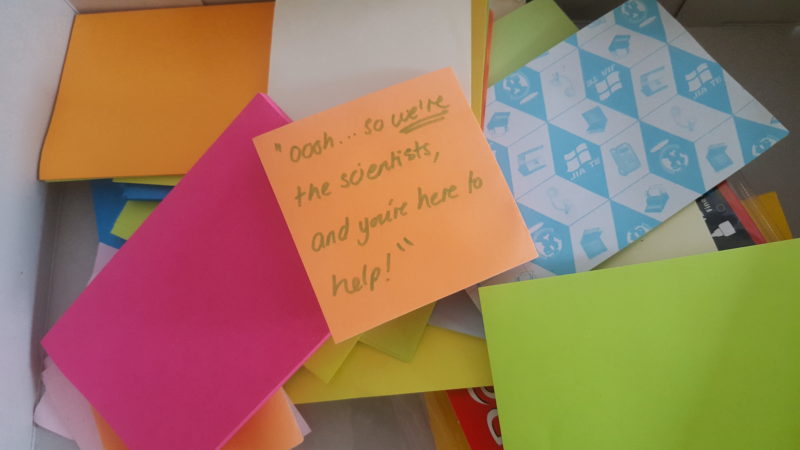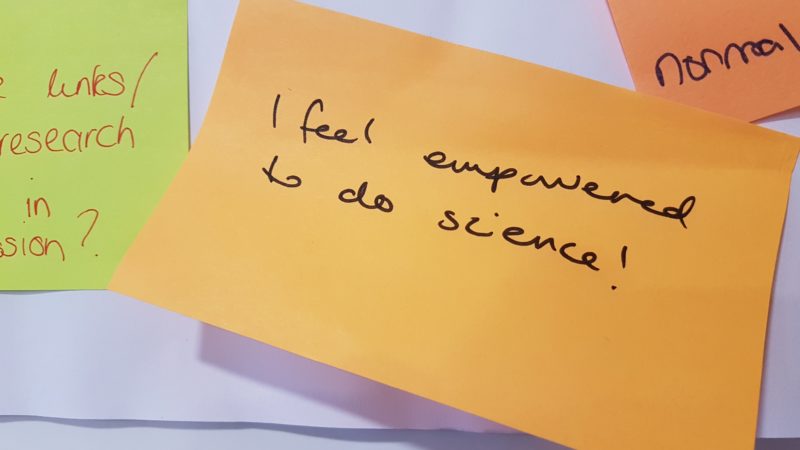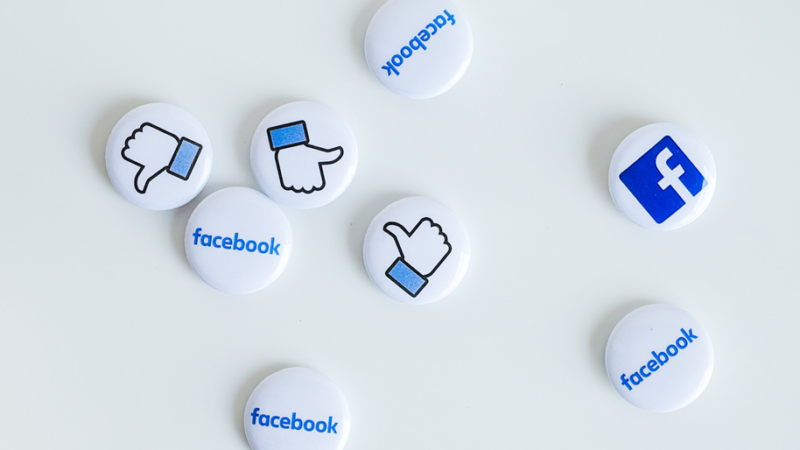
Top tips on running a project like Parenting Science Gang
In this blogpost you’ll find reflections from the Parenting Science Gang (PSG) core team on what worked well and what we’d do differently if we were running a similar project again.
Parenting Science Gang, while based on a similar premise to Nappy Science Gang (NSG), was much larger in scale and reach than that earlier project. Key aspects of our approach were:-
- Genuinely co-producing research – i.e. led by the users
- Working with parents of young children (read our top tips on this here)
- Using Facebook (read our top tips on this here)
We’ve published our top tips on using Facebook and on being family-friendly over the last couple of days. Reflecting on other aspects of the project, we (the core team of four staff) have produced the following notes to serve as a guide for those thinking of running a similar project.
Staffing
This kind of project is time-consuming. Each group is different and they need a lot of support (reminders, scaffolding, etc). In this project, actual staff time worked was significantly more than the “official” hours. For a future project, plan and budget for a lot more staff time. This type of citizen science does not save you time or money.
Team time – one of the fantastic things about this project was that as well as putting parents (mostly mums) in charge of the research agenda, it also offered part time and flexible working to all its staff. All staff were mums with small children and worked from home for the most part and part time. However, working remotely can be hard sometimes. We had a couple of face to face meet ups, but mostly we only got together when running the events for participants. Face to face meetings to bond as a team and to brainstorm future aspects of the project would have been valuable.
Advisors
The research areas that our parents chose were wide ranging as were the techniques they chose to use. Often these were outwith the expertise of the team. Having scientific advisors, separate to the collaborating experts, would have been useful for understanding and perspective.
“I would have really appreciated a friendly scientist who the project team members could go to for advice throughout the project (e.g. questions about writing surveys / ethics applications or whatever) in addition to the experts we were working with. Someone who understood citizen science and our aims and who supported us throughout the project and who we could bounce ideas off.” Core Project Team Member
The difficulty with this of course is knowing who to have available from the outset. As we didn’t know what areas the groups would choose, we couldn’t predict this in advance. We had partner organisations (although, other than NCT, they were mainly interested in our work rather than involved) and some friendly scientists that gave their time. Budgeting for scientific advisors in a range of areas might have been useful.
Tools
Online project tools help remote working enormously. However, choose your tools carefully; as an example, Slack is great for quick chats/exchange of ideas, but a nightmare to find anything again!
We found the tools we used changed as the project developed and our needs and priorities changed. Because of our limited budget, we predominantly used free tools.
Tools we used included:
- Slack – mainly for exchanging ideas on a day to day basis; the free version has limited storage, so it is not a place to store important information as you will lose it.
- Trello – an online project management tool which we found useful to begin with, but the more we progressed with the project, the more we utilised Google Drive.
- Google Drive – we stored all our important documentation here; the file management system is familiar and you can limit the visibility at the document and folder level.
As our project was conducted on Facebook, we had a lot of posts. Many of these need to be personalised, but many are repetitive in nature, therefore we tried various social media management tools.
We tried several free/fremium tools, before deciding it was worthwhile paying for one:
- Publer
- Slack social
- Grytics
- Tweet deck
- Coschedule (we paid for this)
We would definitely recommend budgeting for social media management tools rather than trying to get by with the free ones. But recognise the limitations of these tools – most packages have limited users (social profiles) unless you have a very large budget.
Events
We all agreed that events are often the most transformative experiences. It is real human experiences that make the most difference, no matter how great the internet is. It doesn’t need to be online OR offline, they can work together. The feedback we received from attendees at our events was almost unanimously positive. However, they are a lot of work – they take up a lot of time and headspace, which interrupts from work on the day-to-day of the project. Given the paucity of staff time, this had a big impact on keeping the groups on track with project timelines.
We don’t have the perfect solution to this, however, in a future project we would seriously consider hiring an events manager to do the bulk of the event organisation e.g. scoping venues, liaising with attendees re. requirements and focus on the event timeline. We still think events would require attendance and work from the other team members, but the time spent involved in planning, and the impact on our focus on other parts of the project would be massively reduced.
Choosing Groups
In our first year, the four groups were all groups that our Director, Sophia, had links with, or who approached us off the back of Nappy Science Gang. We found that the two breastfeeding groups found it much easier to choose a final question because they had a unifying interest and focus. Whereas the other two groups did not – one group was interested in all aspects of evidence-based parenting, the other group was based around geographical area rather than shared interests.
In year 2, for the most part we chose groups that had shared area of interest. In a future project, we would recommend taking this approach. There will still be a lot of questions but selecting which questions to focus on and choosing a final question will be more streamlined, and less likely to put off a proportion of the group who are not interested in it.
Managing Groups
If we were to run a similar project, there are a few changes that we would make to the way we managed the groups:
- Allow more time at the start for each group to explore the idea of how science approaches parenting issues and how to use what you find out. When this process is rushed, groups do not necessarily choose the most powerful questions.
- Lessons from one group cannot necessarily be carried over to another group as each group has its own distinct culture. In a future project, we would stagger the start of new groups by a few months, to allow admins to get to know the new group, increase the groups understanding and to avoid clashing deadlines across multiple groups.
- The disadvantage to this is that by having 2 cohorts of groups we were able to have shared Q&As on general topics, and this would be difficult to do if the groups were staggered. However, by having a panel of advisors (see Advisors section), this risk may be mitigated.
- Emphasise the timeline and limitations of the project to the group from the start and keep repeating the information (we had many instances where group members thought that PSG would continue indefinitely even though we thought we had made the timelines clear).
- Allow plenty of time to help the groups work through their dissemination plans and their “after PSG” plans (i.e. will the group close or transition to self-management) as this takes quite a lot of support.
Co-production and working with scientists
Our Q&As functioned not just as a way for groups to learn more about areas of science they were interested in, from experts in the field. But, as the groups homed in on their research questions, they also worked as a low-stakes ‘first date’ between the groups and scientists working in the area. Sometimes ideas for collaborations came out of these chats.
In the main, we have enjoyed mutually productive relationships with the scientists our groups have collaborated with. The scientists got access to research subjects, or help recruiting research subjects, and the ‘expertise from lived experience’ of our parents in working together to design a novel research study. Our groups got access to scientific equipment and expertise and guidance through the steps they needed to take to make their research plan happen.
However, we have sometimes had misunderstandings and a mismatch of expectations. There is a growing literature on co-production and patient involvement in research (see some useful resources below). This identifies several obstacles to effective co-production, including the need for roles to be shared and a lack of hierarchy, ‘experts’ needing to recognise and value the expertise-from-lived-experience that publics can bring, and the time and energy needed from experts to explain things at far more length than they would to their peers, in order to give the lay volunteers the chance to truly be part of decision-making.
The literature linked to below generally assumes that ‘experts’ and institutions have purposefully decided to do something on a co-production model. So, it enjoins experts to recognise their privilege and relative power at the start of the process. Our project was kind of ‘extreme co-production’ model, where it wasn’t led by an institution, but by the lay publics. Experts weren’t putting themselves forward for a co-production adventure. WE asked THEM out. And while most were sensitive, self-reflective and supportive, they didn’t really have a chance to prepare themselves or know quite what they were letting themselves in for.
When we had approached them, it may not be realistic to expect them to go and seek out and familiarise themselves with the emerging literature on social and ethical issues in co-production and start adjusting their worldviews. And, particularly given the well-documented issues of over-work and lack of time experience by many academics, it may not be realistic to demand they spend an afternoon playing a ‘Purposeful Partnerships’ card game with us before agreeing to work together.
Our only advice would be for similar projects to read the literature below, be mindful of the kind of issues that might occur, try to be clear in your expectations, and sound out the expectations of your scientific collaborator(s). And be willing to choose a different collaborator if your expectations don’t align.
“The many shades of co-produced evidence”, by Pippa Coutts
Being Inclusive in Public Involvement (PI) in Health Research
“Purposeful Partnerships card game”
A framework for public involvement at the design stage of NHS health and social care research: time to develop ethically conscious standards.
Raksha Pandya-Wood, Duncan S. Barron, Jim Elliott, Res Involv Engagem. 2017; 3: 6.
Reaching under-served audiences
Under-represented groups to work with can be hard to find. We had our first four groups planned as part of our application process, but for our Year 2 groups we tried to increase diversity with little success. To make this work, we think we would have needed a lot more time and also funded staff that are part of other communities.
For example, we found it worked really well where the admins in a group were already part of that community (for example, mothers / breastfed our own children / lived in the same region). It was possible to admin when we weren’t part of that community, and we did, but it was easier and quicker to get started when we already understood the “culture” of the community. For a future project, some thought about recruiting additional team members who are part of an existing group or recruiting someone who has experience of working with under-served audiences.
Our attempts to reach a more diverse set of groups in Year 2 included reaching out to personal contacts of the PSG team, asking existing PSG members to put us in touch with groups that they were members of / aware of and reaching out to various support organisations. We were explicit in a lot of our posts in that we wanted to recruit a more diverse mix of parents for year 2 (example text below from one of our blog posts)
“The whole point of this project is democratising science and changing the balance of power. We’d especially love to hear from groups of young parents, black and ethnic minority parents, parent carers, and anyone whose voice is not usually well represented in science. Normally a bunch of middle-class white guys decide what gets funded in science. They may not have the same view as you about what’s important.”
Example recruitment memes:-
We had arranged to run a face to face PSG group working with an NCT-funded project for refugee mothers in Leeds. However, in the end this group had to pull out as budget cuts and local circumstances meant that staff were over-stretched. We offered to run the sessions ourselves, but staff locally would still have needed to do some additional admin (booking rooms, publicising sessions, etc) and as staff were only paid for contact time (and working well over their hours already), they eventually decided they couldn’t go ahead. Even though they had been very positive about what this opportunity could offer for their client group.
This was very disappointing both for us and them. If we had better understood the situation much earlier in the process, we could have built extra money into the budget to pay their staff to support the collaboration. One learning point for us has been that small, local organisations working with the most under-served audiences are likely to be very over-stretched, and don’t have the slack to provide any staff time to support a partnership, even when it aligns completely with their organisational aims and they really want to do it. We should have built in extra budget and would do in future.
However, while we were not as successful as we’d hoped, we did engage various audiences who were marginalised in some way:
- Mothers with a higher BMI (over 30) at the start of pregnancy – see Big Birthas Parenting Science Gang
- Mothers who live in rural Scotland – see Dumfries and Galloway Parenting Science Gang
- Mothers of children are extremely restricted or selective eaters – see Mealtime Hostage Parenting Science Gang
- Mothers who are are breastfeeding past one year (only 0.5% of the UK population) – see Breastfeeding Older Babies and Beyond Parenting Science Gang.
Living with uncertainty
This has been tangentially touched on in other sections, but it’s worth stressing. The radical user-led design of the project meant that we had to live with a lot of uncertainty. We didn’t know what topics the groups would choose to research, what kind of experiment they’d want to do, or how long it would take. This made planning ahead hard. We couldn’t (in most cases) book Q&A experts months in advance, because we didn’t know what they’d want to be talking about. Things like the (considerable) logistics for the breastmilk experiment – getting 130 nursing mothers plus children to the same hospital in London, on the same day, with all the equipment and paperwork needed – couldn’t even be begun until the groups had decided on their protocol. We couldn’t front-load our planning much.
We had to be willing to live with uncertainty if we wanted to truly give our participants power. It is not for the fainthearted.



